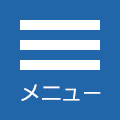外国人向け【PET/CT がん検診】
当院が実施するPET/CTがん検診は、PET/CT(FDG)検査のみです。
PET/CT(FDG)検査とは
がんなどの病気を見つける画像検査です。「がん細胞が正常細胞に比べて何倍も多くブドウ糖を取り込む」という仕組みを利用し、ブドウ糖に似た検査薬(FDG)を体内に注射して、全身のがんの有無を調べます。
PET/CT検査の利点と欠点
利点と欠点
- ✔ 早期発見
- ✔ 全身を一度で調べて、多くのがんを発見できること
- ✔ がんの種類によって通常のレントゲンやCT、MRI検査より
正確な診断がつく可能性が高い
✔ 安全で身体的負担が少ない
病変の種類・部位・大きさによっては評価が難しく、炎症や正常臓器にもFDGが集まることがあり、精度は100%ではありません。重度の糖尿病があると画像は不鮮明になることが多く、当日の血糖値が200mg/dl以上ある場合は検査を延期することがございます。
見つけやすいがん
頭頚部・甲状腺・肺・乳房・食道・大腸・膵臓・子宮・卵巣などのがん。悪性リンパ腫、悪性黒色腫、骨腫瘍など
見つかりにくいがん
FDGが集まりにくい胃や肝臓・胆道がんや正常でもFDGが集まりやすい脳・心臓・腎臓・尿管・膀胱・前立腺などのがん
こんな方におすすめ
✔ がんを早期に発見したい方
✔ ご家族にがんの既往がある方
PET/CT検査を受けられない方
✔ 極度の閉所恐怖症の方
✔ 自立歩行が困難な方
✔ ひとりでのトイレが難しい方
✔ 認知機能低下がある
✔ 1年以内のてんかん発作がある方
✔ 妊娠中、または妊娠している可能性がある方
✔ 授乳中の方
PET/CT(FDG)検診の流れ
受付
当日、予約票に記載された受付時間までに、総合案内にお越しください。
当院コーディネーターが放射線センター受付までご案内します。
診察
検査前に問診と血糖値測定、検査の流れなど説明を行います。
更衣
検査室で着替えをしていただきます。着替えがしやすい服装でご来院ください。貼り薬や貼るカイロは着替えの際に外していただきます。ベルト・時計・アクセサリー、入れ歯は外して撮影します。装飾品は着けずに来院してください。
FDG薬剤の投与
腕の静脈にFDG薬剤を注射します。
待機
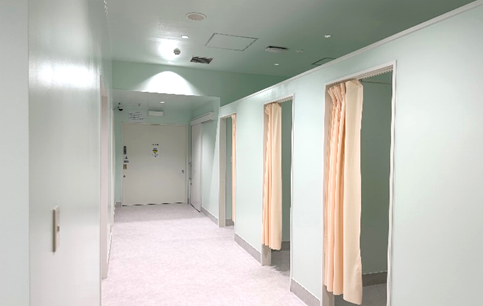
薬剤が全身に回るまで、指定の待機場所で約60分間、安静にしてお待ちいただきます。
携帯電話を見たり、本を読んだりすることもできません。
安静を保てない場合、検査を行えなくなることがございます。
検査室内、待機エリアともにミントグリーンを
基調とした穏やかな空間です。
撮影
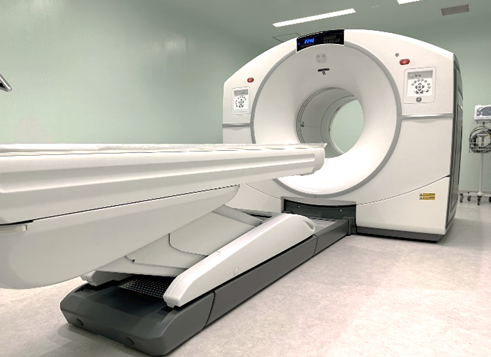
PETカメラとCTが合体したPET/CT装置で撮影します。
撮影時間は約30分間です。
PET/CT装置(DiscoveryIQ)
待機
撮影終了後、FDGの放射能が減少するまで、指定場所で約30分間お待ちいただきます。
お会計
すべての検査終了後、コーディネーターが会計窓口へご案内いたしますので、お支払いをお願いいたします。
Q&A

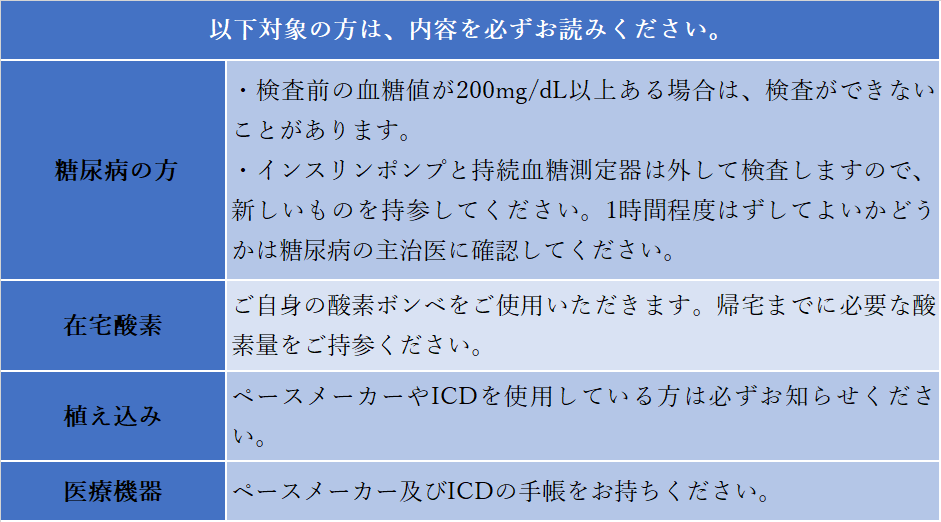
PET/CT Scan
We offer cancer screening using PET/CT (FDG) scans.
What is a PET/CT (FDG) Scan?
A PET/CT scan is an imaging test used to detect cancer and other diseases.
It takes advantage of the fact that cancer cells absorb much more glucose than normal cells. A glucose-like tracer called FDG is injected into the body to scan for cancer throughout the entire body.
PET/CT Scan and Its Advantages
Advantages and Disadvantages
✔ Early detection is possible.
✔ A single scan can examine the entire body and detect many types of cancer.
✔ For some types of cancer, it can offer a more accurate diagnosis than regular X-rays, CT scans, or MRI.
✔ It is safe and puts little physical strain on the body
However, depending on the type, location, and size of the lesions, it can be very difficult to make an accurate assessment. FDG can accumulate in inflamed areas or in normal organs, so the accuracy is not always 100%. In patients with severe diabetes, the images often become unclear, and if the blood glucose level is 200 mg/dL or higher on the day of the examination, it may need to be rescheduled.
Cancers that are Easily Detected
Cancers of the head and neck, thyroid, lung, breast, esophagus, colon, pancreas,
uterus, and ovaries. Malignant lymphoma, malignant melanoma, and bone tumors.
Cancers that are Difficult to Detect
Cancers of the stomach, liver, and bile ducts where FDG accumulation is low, as well as cancers of the brain, heart, kidneys, ureters, bladder, and prostate where FDG may accumulation is high even under normal conditions.
PET/CT Scans are recommended for :
✔ Those who want early cancer detection
✔ Those who have a family history of cancer
Not Suitable for PET/CT Scans
✔ Those who have severe claustrophobia
✔ Those who have difficulty walking independently
✔ Those who need assistance using the toilet
✔ Those who have cognitive impairment
✔ Those who have had a seizure within the past year
✔ Those who are pregnant or may be pregnant
✔ Those who are breastfeeding
PET/CT (FDG) Screening Procedure
Reception
On the day of your appointment, please arrive at the Information Desk by the check-in time listed on your reservation slip. Our coordinator will guide you to the Radiology Center reception.
Consultation
Before the PET/CT scan, we will conduct a medical interview, measure your blood glucose level, and provide any necessary explanations.
Changing Clothes
You will need to change into examination clothes provided in the changing room. Please wear comfortable clothing that is easy to change out of. Remove any adhesive medication patches or heat pads should be removed when changing clothes. In addition, belts, watches, jewelry, and dentures must be removed before the scan. Please avoid wearing accessories when you come to the hospital.
When leaving the changing room, bring only your locker key and payment clear file.
FDG Tracer Injection
In the examination room, FDG tracer will be injected into a vein in your arm.
Resting
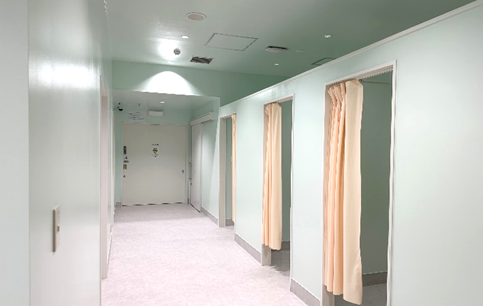
After the injection, you will need to rest in a designated waiting area for about 60 minutes while the tracer spreads throughout your body. During this time, you cannot use your mobile phone or read books. If you are unable to remain still, we may not be able to proceed with your scan.
Both the examination room and the waiting area are designed with a calming mint green theme.
Scanning
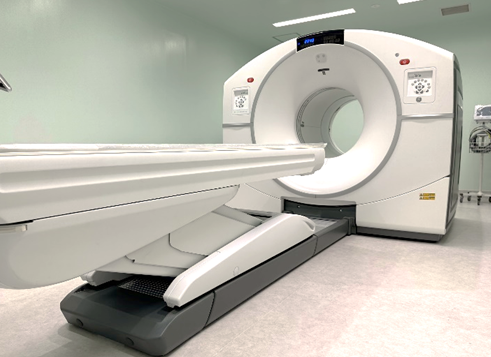
The imaging will be done using a PET/CT scanner,
which combines a PET camera and a CT scanner.
The scanning time is approximately 30 minutes.
PET/CT(Discovery IQ)
waiting
After the scan, you will need to wait in a designated area for about 30 minutes until the
radiation from the FDG in your body decreases.
Payment
After your scan is completed, the coordinator will guide you to the Accounts desk for
payment.
Q&A
About Scans
Q : What is a PET scan?
A :
In a PET scan, a radioactive drug called a positron emitter is injected into the body and a PET scanner is used to take pictures of the radiation emitted from inside the body. Unlike CT or MRI scans, which show structural changes such as organ shapes, PET scans show functional changes such as organ metabolism (cell activity).
Q : Does a PET scan eliminate the need for other tests?
A :
A PET scan does not detect all types of cancer. Some cancers can be difficult to detect. Depending on the condition, a PET scan may be used in combination with blood tests, endoscopy, or ultrasound to make a more accurate diagnosis.
Q : Can all types of cancers be detected with a PET scan?
A :
The effectiveness of PET scans varies depending on the type of cancer. Very small cancers (less than 1 cm) are more difficult to detect the smaller they are. In addition, PET scans can detect benign conditions, such as inflammation, because the tracer can be taken up by non-cancerous lesions. Not all abnormalities detected are malignant, and it can be difficult to distinguish between benign and malignant findings. A biopsy is often required to make a definitive diagnosis of cancer.
Q : Is the scan painful?
A :
There may be slight pain when the FDG is injected into a vein, but the scan itself is not painful.
During the scan, you will be asked to lie on your back on the examination table for about 25 minutes. We will do our best to help you remain as comfortable as possible.
* Please note that a vasovagal reaction, such as a drop in blood pressure, may occur due to nervousness during the injection. This is a temporary response caused by stimulation of the vagus nerve. You will be informed about this before the scan.
Q : How long does the PET scan take?
A :
After an explanation of the procedure and a brief interview, you will change into a gown and receive the tracer injection. After the injection, you will rest for about an hour before the scan, which takes about 25 minutes. After the scan, there is a waiting period of about 30 minutes. If necessary, a second scan may be performed, which takes about 10 minutes. The entire process, from check-in to completion, takes about three hours.
Q : Can I move my body during the scan?
A :
You cannot move your body during the scan.
Q : I have claustrophobia. Can I stop the scan halfway through?
A :
If you have severe claustrophobia, you may not be able to undergo the scan. Please inform us in advance. The scan involves entering a tunnel-like device with a diameter of about 70 cm for approximately 30 minutes.
Q : I'm concerned about radiation exposure.
A :
The amount of radiation exposure from a PET/CT scan is approximately equivalent to 1-4 times that of a barium swallow test, which is a low dose and not at a level that should cause concern. The FDG will exit your body within several hours, so avoid close contact with infants, pregnant women, and breastfeeding women for several hours after the scan.
For More Information (Radiation Dose)
The radiation exposure from the FDG tracer used in PET scans is considered to be less than that from a stomach X-ray examination, at approximately 3.5 mSv. This is about 1/5 to 1/10 of the radiation exposure from a full-body CT scan. While PET/CT scans include radiation exposure from the CT component, there is no risk of radiation damage to the body.
For reference: Stomach barium X-ray: 4 mSv, Chest CT scan: 6 mSv, PET/CT: 10 mSv (according to data from Saku Central Hospital).
The administered tracer is very short-lived and is excreted through the urine, so it is mostly eliminated from the body within one day.
Q : How can I obtain more accurate test results?
A :
Excess tracer is excreted in the urine. Drinking plenty of sugar-free beverages, such as tea or water, before the test can help produce clearer images and reduce radiation exposure. For examinees with diabetes, it may be difficult to obtain clear images necessary for diagnosis if fasting blood glucose exceeds 200.
For Women
Q : Menstruation
A :
For women with menstrual periods, the timing of the test may affect the clarity of certain areas. Please contact us for further details.
Q : Breastfeeding
A :
Try to avoid breastfeeding immediately after the test. Breastfeeding should be avoided for 12 hours after the tracer injection. Consider expressing and storing milk before the test.
Q : Pregnancy
A :
As with other radiological tests, we do not recommend PET scans during pregnancy due
to the potential for radiation exposure to the fetus.
Before Scan
Q : Are there any precautions I should take from the day before the scan?
A :
From the day before the scan until it is completed, avoid strenuous exercise and physical labor, or similar activities. Excessive exercise may cause tracer accumulation in the muscles.
Q : Can I eat and drink on the day of the scan?
A :
Please finish your meal at least six hours before your appointment. Eating or drinking anything containing sugar or calories within six hours of the test may affect the results and could lead to rescheduling. This includes candy, gum, fruit, soup, and juice. You may drink sugar-free tea or water.
Q : Can I take my usual medication?
A :
If you have diabetes, stop taking your diabetes medication and insulin six hours before your appointment. Other medications prescribed by your physician can be taken as usual.
After Scan
Q : Are there any precautions after the scan?
A :
After the scan, to minimize radiation exposure to others, please avoid crowded places as much as possible. Also, try to limit contact with infants and pregnant women.
Other Information
Q : Could vaccinations or other medical tests affects a PET Scan?
A :
Vaccinations
Vaccinations can accumulate in the lymph nodes and affect the images. Please schedule your PET scan at least two weeks after receiving a vaccination.
Barium Tests
Barium can interfere with CT images. Please schedule your PET scan at least one week after a barium test.
Nuclear Medicine Tests
Residual radiation from nuclear medicine tests may affect PET scan results. It is recommended to undergo the PET scan first and schedule the nuclear medicine test on a different day.
Bone Density Tests
Residual radiation from a bone density test may affect PET scan results.
It is recommended to undergo the bone density test before the PET scan.
Contrast-enhanced CT Scans
Residual contrast agent may affect PET scan results. Please schedule your PET scan the day before or the day after your contrast-enhanced CT scan.
Endoscopy
Inflammation at the test site may cause FDG uptake. If you have an endoscopy on the same day, we will provide a report that takes this into account
Bronchoscopy
Please schedule your PET scan at least one week after a bronchoscopy.
Biopsy
Please schedule your PET scan at least one week after a biopsy.
Q : I don't speak Japanese. Can I still have the test?
A :
If you do not speak or read Japanese, please come with someone who can assist you in Japanese.
If you are eligible for the following, please read the relevant sections carefully.
Diabetic Patients:
➤ If your blood glucose level is 200 mg/dL or over before the PET/CT scan, the scan may not be conducted.
➤ Please remove your insulin pump and continuous glucose monitor before the scan, and bring new ones with you. Confirm with your diabetes specialist whether it is safe to remove these devices for approximately one hour.
Home Oxygen Therapy:
➤ Please use your own oxygen tank, Make sure you bring enough oxygen to last until you return home.
Implanted Medical Devices:
➤ If you have a pacemaker or ICD, please inform us in advance.
➤ Please bring your pacemaker and ICD (Implantable Cardioverter Defibrillator) identification certificate.
Contact Us
Division of International Medical Service Promotion
Nippon Medical School Chiba Hokusoh Hospital
E-mail: hok-impact@nms.ac.jp
TEL: 0476-99-1111 (Main Number)
FAX:0476-99-1922
Consultation Hours
Mondays to Fridays 8:30 a.m. to 4:00 p.m.
Saturdays 8:30 a.m. to 3:00 p.m.
Closed days of regular service:
Sundays, National holidays,
From December 30th to January 4th,
Foundation Day (April 15th) or its rescheduled date
外国人PET/CT(FDG)癌症筛查体检
本院的癌症筛查体检是,PET/CT(FDG)单独检查。
什么是PET/CT(FDG)检查
早期诊断并鉴别肿瘤的成像检查。
利用「癌细胞凝聚葡萄糖会比正常细胞多出好几倍」的原理,向体内注射性质类似葡萄糖的显像剂(FDG),来筛查全身肿瘤(癌症)。
PET/CT检查的利弊
PET/CT检查利弊
✔ 早期诊断
✔ 一次能筛查全身,容易发现多处病变
✔ 根据肿瘤种类,与X光,CT,磁共振(MRI)检查相比,得到正确诊断的可能性高
✔ 安全且对身体负担较少
但是根据病变种类·部位·大小有可能无法进行评估,并且FDG有时也会凝聚在炎症发生部位或正常器官,因次检查精确度无法达到100%。重度糖尿病患者成像不清晰的情况较多,如果检查当天的血糖值超过200mg/dl,检查可能需要延期。
容易发现的肿瘤
头颈部·甲状腺·肺·乳房·食道·大肠·胰腺·子宫·卵巢等癌症。
恶性淋巴瘤,恶性黑素瘤,骨肿瘤等。
不易发现的肿瘤
FDG药剂不容易凝聚的胃,肝脏·胆管的癌症。
脑·心脏·肾脏·输尿管·膀胱·前列腺等癌症,因为这些器官在正常情况下也容易凝聚FDG药剂。
PET/CT检查适合人群
✔ 想早点发现·诊断肿瘤
✔ 家族有癌症史
无法接受PET/CT检查的人
✔ 有严重的封闭恐惧症
✔ 独立步行困难
✔ 一个人如厕困难
✔ 认知功能低下
✔ 最近一年以内有过癫痫发作
✔ 孕期,或目前有怀孕的可能性
✔ 哺乳期女性
PET/CT(FDG)体检的流程
签到
当天请您在接收时间内,到医院的综合案内窗口签到。
工作人员会带您到放射线中心。
诊察
检查之前会进行问诊,测血糖,进行关于检查的说明。由于当天时间有限,关于您的疑问,有可能无法在时间内全部解答。
如果您有任何疑问,请事先联系我们。
更衣
在更衣室换成检查服。请穿着容易脱穿的衣服来院。身上请不要贴膏药,暖热贴等,如果有贴,换衣时会请您拿掉。检查时,腰带·手表·首饰·假牙等都需要拿下来。来院时请不要佩戴任何饰品。
注射FDG药剂
在上肢静脉注射FDG显像剂。
等待
在指定的休息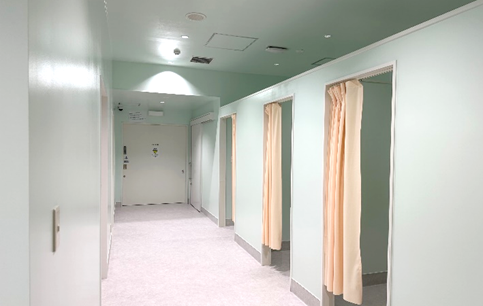 室安静等待约60分钟,直至显像剂药物分布全身。期间不能看手机,不能读书。如果不能保持安静,有可能无法进行检查。
室安静等待约60分钟,直至显像剂药物分布全身。期间不能看手机,不能读书。如果不能保持安静,有可能无法进行检查。
以薄荷绿为基调的舒适空间
拍摄影像
用PET与CT融为一体的设备,拍摄影像。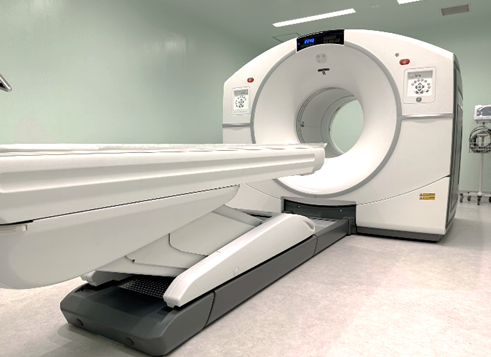
一次拍摄大约需要30分钟左右。
PET/CT装置
(DiscoveryIQ)
等待
拍摄结束后,在指定的休息室等待约30分钟,等到FDG显像剂辐射作用衰退。
结算
所有检查结束后,工作人员会带您到结算窗口,请您在窗口或自动付款机支付费用。
Q&A
关于检查
Q :PET扫描是一种什么样的检查?
A :
向体内注射一种发射放射线的正电子显像剂,用PET设备拍摄体内放出的放射线量。与CT或MRI拍摄形态变化(器官的形状)的检查不同,该检查是将器官的代谢等功能变化作为成像来检查。
Q : 做PET检查,就不用做其他检查吗?
A :
PET检查并不能检查出所有癌症。其中也有较难发现的癌症。
根据疾病,并用血液化验,内窥镜检查,超声波检查等,诊断精度会更高。
Q : 可以检查出所有肿瘤吗?
A :
根据肿瘤的种类,PET检查有擅长不擅长。大小不满1cm的小肿瘤,很难被发现。除了癌症以外,炎症等良性病变,也有可能聚集药物并在PET成像中显现。
此外,并非所有发现的疾病都是恶性,也有无法判断良性还是恶性的可能性。确诊癌症很多情况需要采集细胞或组织来做病理学检查(活检)。
Q : 检查伴随疼痛吗?
A :
显像剂静脉注射时会痛,除此之外没有任何疼痛。拍摄期间,需要平躺在检查台上大约25分钟左右。会尽量让您保持舒适的姿势。
※注射时,过度紧张,有可能发生血压下降等迷走神经反射。检查之前会做说明。
Q :检查需要多长时间?
A :
检查说明还有问诊之后,换成检查服,注射显像剂。注射后需要安静等候1个小时,之后会拍摄25分中左右。拍摄完毕,在休息室等待30分钟,就可以结束。如果有需要会拍第二次(10分钟左右)。从检查受理到结束为止,全程大概需要3个小时。
Q :检查过程中,身体可以活动吗?
A :
检查过程中,不可以活动身体。请听好技师指令。
Q : 我有封闭恐惧症。检查途中发作,可以叫停吗?
A :
如果您的封闭恐惧症较严重,可能无法接受检查。请您务必告知我们。该检查需要躺在直径大约70cm的隧道式装置里面,并且持续30分钟左右。
Q :我担心核辐射。
A :
PET/CT(FDG)的辐射是微量的,相当于胃肠道钡餐透视的1到4次左右的辐射量,所以不必担心发生辐射性损伤。FDG显像剂会在几个小时内从体内消失,因此在检查后几个小时之内,不要接触,婴幼儿·孕妇·哺乳期女性。
关于辐射量具体是
FDG显像剂的辐射量是3.5mSv(毫西弗)左右,低于胃肠道钡餐透视的辐射量,相当于全身CT的十分之一到五分之一。PET/CT检查的总辐射量是FDG显像剂加CT检查的辐射量,但是也不会对身体造成辐射性损伤。
※胃肠道钡餐透视:4mSv、胸部CT检查:6mSv、PET/CT:10mSv(引用自佐久医疗中心的资料)
注射体内的显像剂药物寿命非常短,会通过小便排出体外,大概1天左右时间基本上会从体内消失。
Q :为了做好检查?
A :
多余的显像剂药物会通过尿排出体外。检查前尽量多喝水(只限纯净水,果味水除外),影像会更鲜明,也会降低辐射量。
糖尿病患者,如果检查当天的血糖值超过200mg/dl,很难获得清晰的影像,也可能影响下诊断。
关于女性
Q : 关于月经
A :
在经期,根据检查时间某些部位可能难以诊断,如果检查日期碰上经期,请提前告诉我们。
Q : 关于哺乳
A :
检查之后请暂停哺乳。从药物注射起12个小时之内,请不要哺乳。请在检查之前做好吸乳等准备。
Q : 孕期
A :
与其他核医学检查一样,孕期不适宜做PET/CT检查。因为会对胎儿有辐射。
检查前
Q : 前一天开始有什么要注意的吗?
A :
检查前一天到检查结束为止请避免剧烈运动且不要过度操劳。过度的运动会使肌肉容易聚集药物。
Q : 检查当天,可以吃饭吗?
A :
检查前6个小时需要禁食。如果检查前6个小时之内吃过东西,会导致检查结果不准,所以无法接受检查。糖,口香糖,水果,汤汁,果汁,饮料,牛奶,酒等也要禁饮6个小时。只可以饮用纯净水(果味水除外)。
Q : 平常吃的药,可以正常服用吗?
A :
糖尿病患者需在检查前6个小时停用糖尿病药物和胰岛素。此外,平时服用的处方药可以照常服用。
检查后
Q : 检查结束后,有什么注意事项吗?
A :
PET检查后,为了防止体内放出的放射线对周围人的辐射,请尽量避开人多的地方。
检查结束当天,请避免接触婴幼儿,孕产妇及哺乳期女性。
其他
Q : 其他检查,会对PET/CT有影响吗?
A :
疫苗
药物聚集在淋巴结,影响成像。请从疫苗接种日间隔两周以上,再预约PET/CT检查。
胃肠道钡餐透视
影响CT成像。请间隔1周以上,再预约。
核医学检查
需要考虑残留在体内的辐射的影响。请先进行PET检查,然后改天预约核医学检查。
骨密度检查
要考虑残留在体内的辐射的影响。请先进行骨密度检查。
造影CT检查
如果造影剂残留在体内的状况下,进行PET/CT检查,指标容易偏高。请在造影CT检查前一天为止或者检查第二天之后再预约PET/CT检查。
内窥镜检查
内窥镜的检查部位如果有炎症,将容易聚集FDG药剂。
※如果同一天有做胃镜,会考虑胃镜检查带来的影响的基础上,做读影报告。
支气管镜检查
检查部位如果有炎症,将容易聚集FDG药剂。请间隔1周以上再做PET/CT检查。
活检
检查部位如果有炎症,将容易聚集FDG药剂。请间隔1周以上再做PET/CT检查。
Q :不会说日语,可以接受检查吗?
A :
日语读写困难者,需要会日语的人陪同做检查。若您找不到陪同做口译的人,请提前咨询我们。
本院也可以提供体检口译服务(有偿),但是口译人员人数有限,请务必提前联系。

咨询窗口
国际医疗推进室
星期一~星期五:上午8点30分~下午4点00分
星期六:上午8点30分~下午3点00分
星期日,日本法定假日,元旦假期(12月30日~1月4日),
成立纪念日(4月15日或代休日)除外
电子邮箱:hok-impact@nms.ac.jp(英語・中国語対応可)
电话: 0476-99-1111(总机) 传真:0476-99-1922

